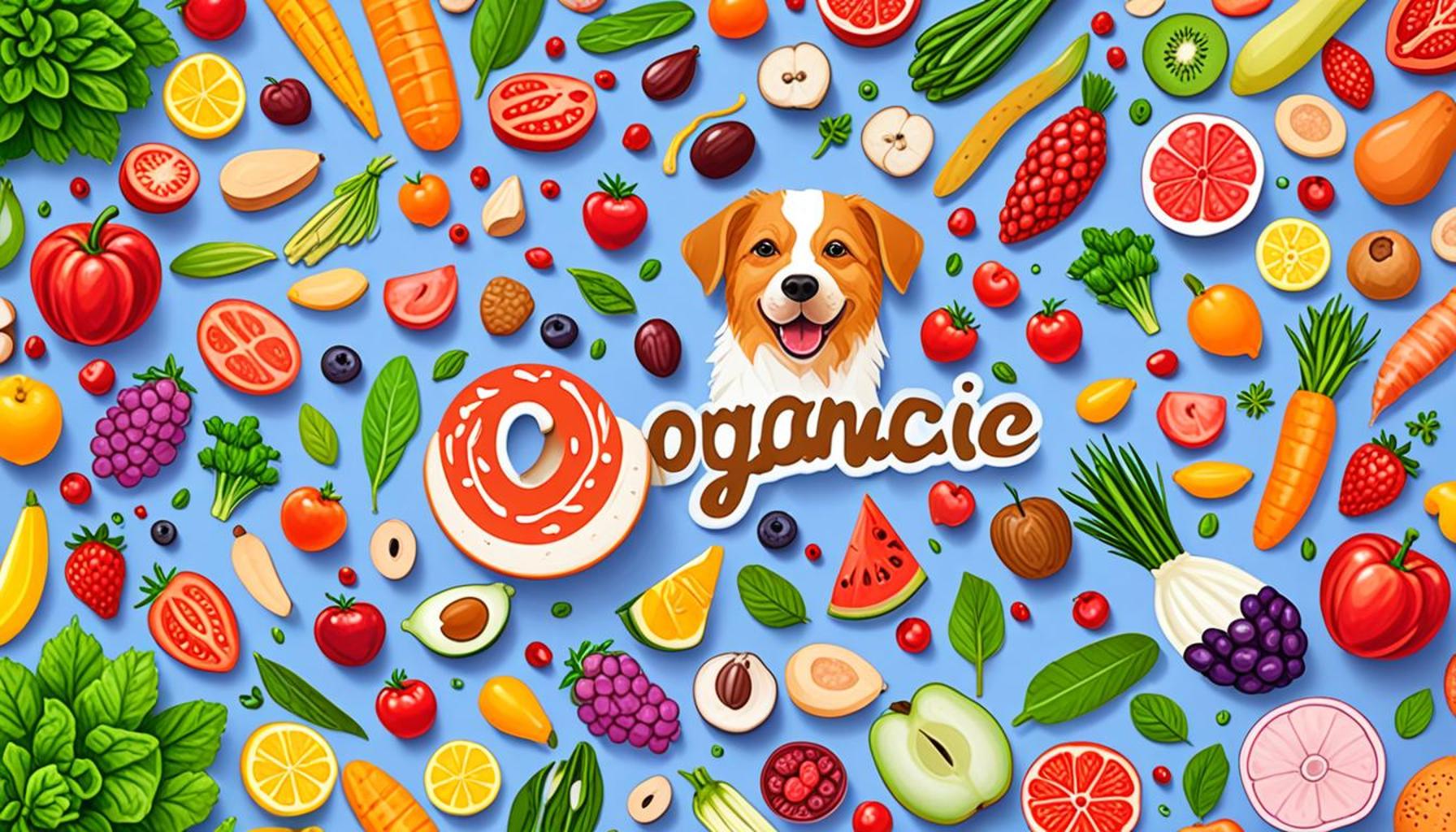How to Choose Natural and Organic Foods for Your Pet

Exploring Better Nutrition for Pets
As more people become aware of the impact of nutrition on health, a similar trend is emerging within the pet industry. Pet owners across the United States are increasingly curious about how to provide the best possible nutrition for their furry companions. This growing interest comes as a reflection of a broader commitment to health and well-being, leading to a surge in the availability of natural and organic foods for pets. However, with this abundance of options can come confusion. Understanding the benefits and characteristics of these foods can greatly assist in making informed choices.
Key Aspects of Evaluating Pet Food
When it comes to selecting pet food, focusing on certain aspects can greatly enhance the decision-making process:
- Ingredients: Prioritize foods that feature whole, recognizable ingredients. Look for real meats, vegetables, and grains instead of fillers like corn or soy, which can offer little nutritional value and may lead to allergies.
- Labeling: Foods should be clearly marked as ‘organic’ or ‘natural’. Familiarize yourself with terms such as USDA-certified organic and non-GMO, as these labels ensure a higher standard of quality. Additionally, reputable brands often have third-party certifications that add credibility to their product claims.
- Formulation: It is crucial to choose pet foods that cater specifically to your pet’s age, size, and health requirements. Puppies, adult dogs, and senior pets have different nutritional needs, which should influence your purchasing decisions.
Advantages of Natural and Organic Foods
Feeding your pet with natural and organic foods can yield numerous benefits, such as:
- Improved health: Pets that consume organic ingredients often exhibit better digestion and lower incidences of allergic reactions. For example, many pet owners report fewer skin irritations and digestive issues after switching to a natural diet.
- Ethical sourcing: Many brands prioritize sustainability and humane practices. By choosing these products, pet owners support companies that advocate for animal welfare and environmentally responsible farming practices.
- Customized nutrition: Natural foods provide a broader array of choices, enabling owners to tailor diets to their pets’ unique health needs and preferences. Formulations that include specific nutrients for certain conditions, like joint support or skin health, can greatly enhance your pet’s quality of life.
As you begin your journey towards selecting better nutrition for your pet, it is essential to remain informed. Research different brands, read reviews, and keep an eye on emerging trends in pet nutrition. A little diligence can go a long way in enhancing the well-being of your beloved companions. By understanding how to navigate pet food selections effectively, you lay the groundwork for a healthier, happier life for your furry friends. Dive into this world of natural and organic pet foods and make discerning choices to enrich their lives.
DISCOVER MORE: Click here to learn effective training techniques for your cat
Understanding Pet Food Labels
In the quest for better nutrition for our pets, deciphering pet food labels emerges as a critical skill for pet owners. The multitude of choices in natural and organic pet foods can be overwhelming, but knowing how to read labels allows you to make educated decisions. Key components of pet food labels include the list of ingredients, guaranteed analysis, and feeding guidelines, all of which provide insight into the quality and nutritional value of the products you are considering.
Decoding Ingredients Lists
The ingredients list is your first point of reference when assessing a pet food’s quality. Aim for foods that list meat as the first ingredient, as it indicates a higher concentration of protein. Common meats you might encounter include chicken, beef, or fish. Here’s what to look for:
- Whole Ingredients: Foods should contain identifiable components such as “chicken” or “brown rice,” rather than ambiguous terms like “meat by-product,” which can encompass lower-quality distinctions.
- Whole Grains vs. Fillers: Look for whole grains like brown rice or oatmeal, as they offer nutritional value. Avoid foods filled with corn, soy, or wheat, as they are often used as cheap fillers that provide limited benefits.
- Natural Additives: Some foods may include essential nutrients from natural sources, such as fish oils for omega-3 fatty acids or fruits and vegetables packed with vitamins. Be cautious of artificial preservatives, colors, or flavors, which can detract from quality and could potentially cause health issues.
Navigating the Guaranteed Analysis
The guaranteed analysis section offers vital information about the nutrient content of the pet food. It typically lists the minimum percentages of crude protein and fat, and the maximum percentages of fiber and moisture. Understanding these numbers can help you determine if the food aligns with your pet’s needs:
- Protein and Fat Levels: Ensure that the protein levels are suitable for your pet’s life stage and activity level. For instance, active dogs may require higher protein content for energy, whereas senior pets may benefit from a balanced fat level to maintain a healthy weight.
- Fiber Content: A certain amount of fiber is necessary for digestive health, but too much can lead to upset stomachs. Aim for moderate fiber levels to support proper digestion while keeping your pet comfortable.
As you sift through the landscape of natural and organic pet foods, it becomes evident that knowledge is your greatest ally. Familiarizing yourself with how to evaluate labels and understanding the significance of each component will allow you to make informed choices that not only satisfy your pet’s palate but also contribute positively to their overall health. This mindful approach not only fosters a deeper connection with your pet’s diet but also sets the foundation for a longer, happier life together.
| Category | Description |
|---|---|
| Ingredient Quality | Natural and organic ingredients ensure a healthier diet for your pet, avoiding chemicals and preservatives. |
| Nutritional Balance | Choosing well-balanced organic foods provides essential nutrients supporting overall wellness and longevity. |
| Environmental Impact | Opting for organic options contributes to sustainable agriculture, benefiting the planet while feeding your beloved pet. |
| Pet Allergies | Natural foods often reduce food sensitivities and allergens, improving your pet’s digestive health. |
When it comes to selecting the best options for your furry friend, it’s essential to look into the quality of ingredients used in pet foods. The ingredient list is a critical aspect when choosing natural and organic foods for your pet. Look for real protein sources, whole grains, and plenty of vegetables. Additionally, registered certifications such as USDA Organic can assure you of the food’s authenticity.Beyond ingredient quality, the nutritional balance of the food is paramount. A well-structured organic diet can aid in preventing obesity and related diseases in pets. Furthermore, selecting organically produced pet foods can have a positive effect on your pet’s environment—supporting sustainable agricultural practices reduces your carbon pawprint! Not only do these choices enhance your pet’s quality of life, but they also pave the way for a healthier planet.Lastly, pay attention to your pet’s individual needs regarding allergies or sensitivities. Natural and organic pet foods are often tailored to address common issues, allowing you to provide the best care possible. Engaging with local suppliers or holistic veterinarians can also shine a light on further options tailored specifically to your pet’s unique diet.
DIVE DEEPER: Click here to discover more about the connection between pet behavior and mental health</a
Recognizing Certifications and Standards
When selecting natural and organic foods for your pet, it’s imperative to be aware of the various certifications and standards that ensure product quality and safety. The presence of certain certifications can be a reliable indicator that the food adheres to strict guidelines, giving you peace of mind that you are choosing the best for your furry friend. Some notable certifications to look for include:
USDA Organic Certification
The USDA Organic Certification is one of the most trusted and recognized labels for organic products in the United States. Foods that carry this certification must adhere to specific guidelines that prohibit the use of synthetic fertilizers, pesticides, and genetically modified organisms (GMOs). For pet foods to earn this label, they must contain at least 95% organic ingredients. Looking for this seal guarantees that your pet’s food has been produced in a way that prioritizes environmental sustainability and animal welfare.
AAFCO Approval
The Association of American Feed Control Officials (AAFCO) provides guidelines and standards for the labeling and nutritional adequacy of pet foods. While their certification is not mandatory, brands that follow their principles usually align with best practices in terms of nutritional value. Products that meet AAFCO’s standards must pass feeding trials or meet established nutrient profiles. Hence, checking whether the product lists AAFCO approval can be a vital step in ensuring you are providing a balanced diet for your pet.
Understanding the Importance of Source Transparency
In the realm of natural and organic pet foods, understanding where the ingredients come from is pivotal. Source transparency refers to the clarity provided by manufacturers regarding where and how their ingredients are sourced. Look for brands that openly share information about their suppliers and the origins of their ingredients, as this indicates a commitment to quality. Companies that emphasize local or sustainable sourcing often have a better environmental impact and can deliver fresher, more nutrient-rich products to your pet.
Researching Brand Reputation
It’s also crucial to invest time in researching the brands you are considering. Word-of-mouth recommendations, customer reviews, and even social media conversations can provide insights into a brand’s reliability and product satisfaction levels. Opt for brands that are well-regarded in the pet community, especially those that engage in ethical practices and maintain transparency about their production processes. Engaging with community forums and pet forums can also offer valuable perspectives on which brands prioritize quality and form strong relationships with their customers.
Consulting with Your Veterinarian
Your veterinarian can be an invaluable resource in ensuring that you make the best dietary choices for your pet. A knowledgeable vet will often have insights on recent studies, dietary recommendations specific to your pet’s breed, age, and health status, as well as firsthand experience with various pet food brands. Creating a dialogue about your dietary choices can help ensure that your pet’s diet is not only natural and organic but also tailored to their unique needs.
As you continue navigating the landscape of natural and organic pet foods, remembering these elements—certifications, ingredient sources, brand reputation, and expert advice—will empower you to make informed, health-focused decisions that benefit your beloved companions in the long run.
DISCOVER MORE: Click here to learn about building a strong bond with your pet
Conclusion: Making Informed Choices for Your Pet’s Health
In the quest for the best natural and organic foods for your pet, vigilance and diligence are paramount. By understanding important aspects such as certifications, source transparency, and brand reputation, you create a strong foundation for selecting high-quality options. Start with the essential labels like USDA Organic Certification and AFFCO Approval, ensuring that the products are not only organic but also nutritionally adequate for your beloved companion.
Furthermore, engaging with your veterinarian can significantly enhance your purchasing decisions. They offer personalized insights that account for your pet’s unique dietary needs, leading to healthier and happier lives. Don’t shy away from doing your own research; consumer reviews and community discussions can unveil valuable information about the brands you may consider.
Ultimately, choosing natural and organic foods for your pet transcends mere product selection; it is an ethical commitment to their health and the planet. As you navigate through different options available in the market, remember that your choices carry weight. Embrace your role as an informed consumer, advocate for quality ingredients, and support companies that prioritize the well-being of both animals and the environment. By doing so, you ensure that your furry friends enjoy not just better nutrition but a richer quality of life.
Now is the time to take action — explore the aisles of your local pet store or shop online with newfound knowledge, and witness the positive changes in your pet’s wellbeing.



